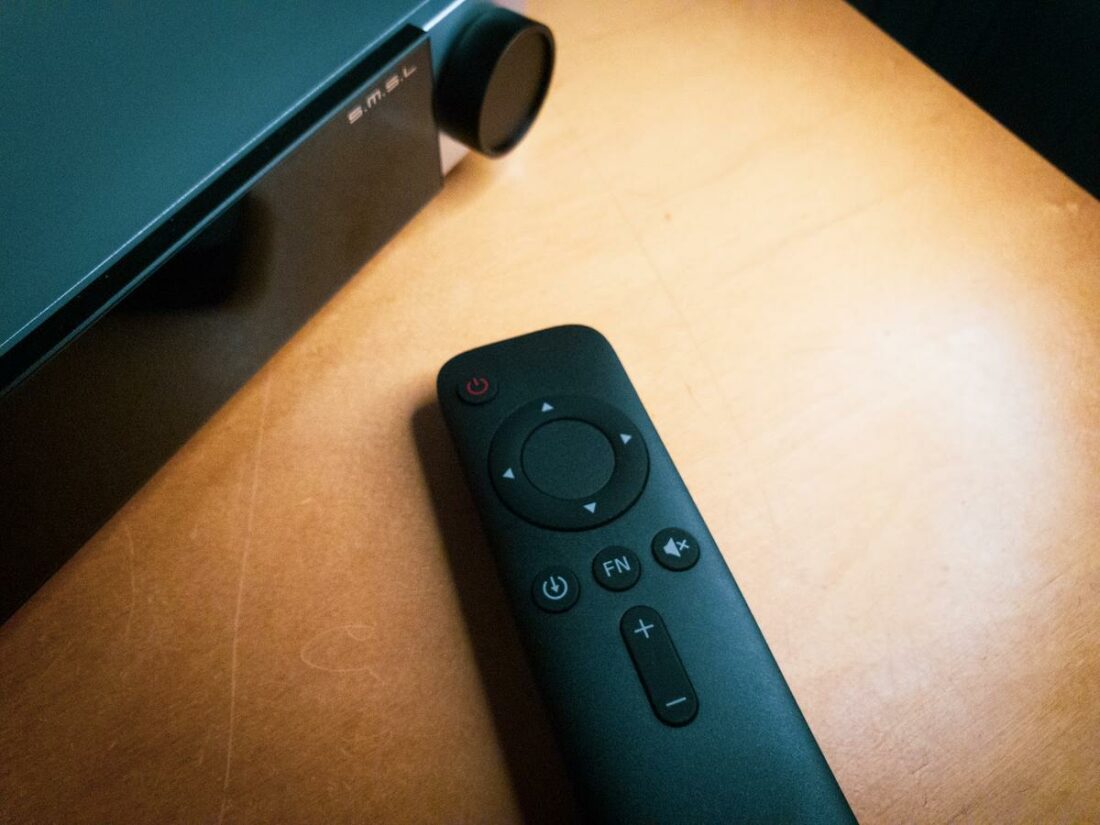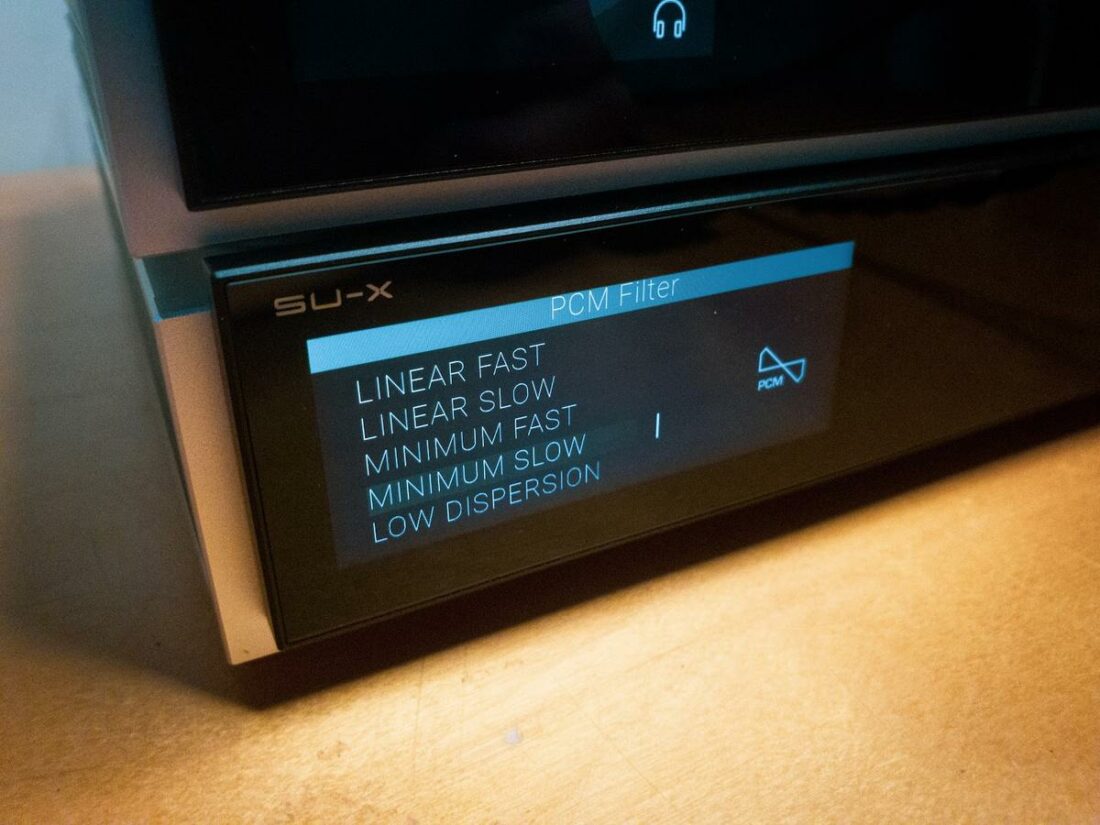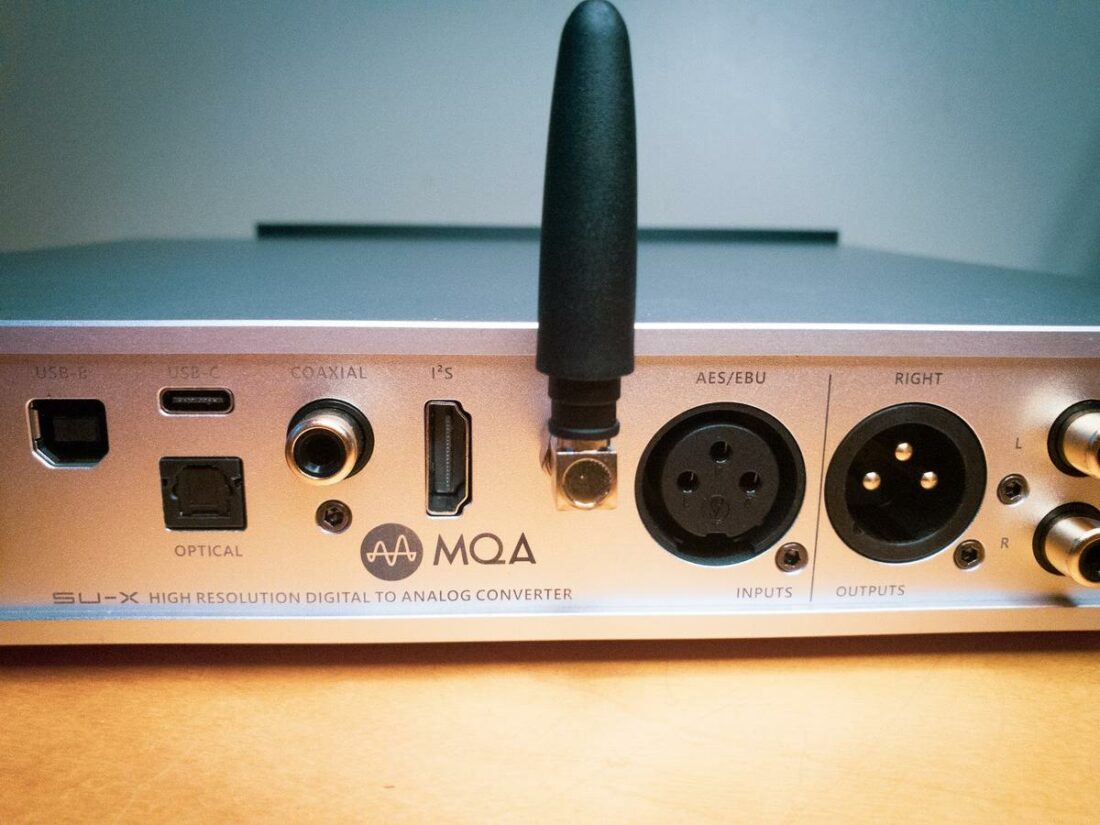Despite unfortunate naming choices, the SMSL SU-X is expertly designed, well-built, and sounds plain awesome!
- Extremely resolving across the audible range
- Reproduces lifelike phantom sound sources
- Never veers into clinical sound
- Very capable as a preamp
- Timbral qualities are very neutral
- Could use more buttons for direct function access
- Upside-down XLR outputs awkward with angled jacks
- 2.5V RCA and 5.2V XLR outputs can be too hot
I won’t be far off if I say that navigating the SMSL product lines is an arduous task. Currently, their webpage has no less than 30 products in the DAC section. There’s an SU-9, SU-9n and SU-9 Pro. The SU-9 Ultra I recently reviewed and adored? Nope, not anymore.
When I saw the announcement of the SU-X my first reaction was a gentle facepalm. Maybe it’s a joke? Unfortunately, no – it’s the top-of-the-line offering in the SU lineup. After all – X is the Roman numeral for 10.
So why not call it the SU-10? Because there already is one.
So, let’s hook this sucker up and hear what SMSL can achieve with more lax budget constraints.
Unboxing and First Impression
Design and Build
The basic construction of SMSL SU-X is not too far from the SU-9 Ultra. The case consists of multiple milled parts held together by bolts. Small milled aluminum feet with silicone pads keep the device from sliding on the desk.

I love that SMSL has continued using the display module that’s encased in dark tempered glass. It’s a bit of a fingerprint magnet but boy does it look good when nice and clean. The LCD shows the current volume in dBFS, selected I/O, sampling rate, and whether it’s PCM or DSD data.

On the back, there’s the usual bevy of IO with a few curious choices.
First – the XLR outputs are upside down. You might be in for a surprise if you’re a weirdo like me and use angled Neutrik XLR jacks. Second – you have both USB-C and USB-B to choose from.
Bluetooth
The SU-X has the standard SMSL Bluetooth daughter board soldered in that supports Bluetooth 5.1. In terms of codecs, there are no surprises – LDAC, AptX, Aptx HD, AAC, and SBC. Lossless Bluetooth would’ve been nice, but very few phones support it.
Controls
There are two ways how one can interact with the SMSL SU-X. The pressable encoder knob is handy if you have the DAC at arm’s length. At a longer range, the remote will extend your reach. How often you’ll mess with the SU-X depends on you; it’s a set-and-forget affair for many people.

Like most SMSL ESS DACs you are offered to muck around with a handful of digital filters that the ES9039MS PRO chip comes loaded with. There are also sound modes that pepper on extra harmonic distortion so you too can try how music sounds to people who don’t believe that measurements are everything.

Under the Hood
SMSL has a way of “tiering” their offerings depending on the technical bells and whistles they’re equipped with. Doubling up DAC chips, using linear power supplies, and separating digital and analog power is usually reserved for the upper echelon products.
The SU-X has it all!

SMSL uses two ESS Tech top-of-the-line 8-channel ES9039MS PRO in mono configuration. From each IC, 4 channels are summed up to create a low-noise version of the positive and negative phases of the right and the left channels.
I’m glad to see two British Noratel toroidal transformers supplying HF-noise-free power to the analog and digital sections of the unit. Capacitive filtering is done by Nichinon Muse electrolytic capacitors. These are often my choice when building audio gear. Good thinking, SMSL!

Before hitting the DAC chip, all digital signals are cleaned up by a SMSL proprietary PLL circuit which should make the SU-X input agnostic. This proved true in practice as I couldn’t really discern between USB and any of the other options.
The output stage uses no less than 21 opamps to take care of the 16 analog outputs and properly sum them up. SMSL doesn’t specify which opamp is used but lately, they’ve been fond of OPA1612 which is a fine choice.
Of course, at this price point, a discrete output stage would’ve tickled my fancy even more.
How Does the SMSL SU-X Sound?
The SMSL SU-X sounds like nothing, even more than anything else I’ve ever heard.
Of course, the real question then remains – how can I judge a device where everything downstream would only pile on its own layers of sonic opacity?

My approach was to swap out many amps and headphones so I could and try to discern whether there was something common between all of the combinations. That way I could attempt to zero in on the sound signature of the SU-X. Alas – it was harder than I imagined.
The SMSL SU-X offers some of the most detailed renditions of recordings I have on my review test list.
When jotting down notes on the listening impressions I often caught myself describing the amp I had hooked up rather than the DAC. Not to mention that I always had to mentally subtract the imprint of headphones and IEMs I used to gauge the capabilities of the SU-X.
The first point I came to realize after hours of comparisons is that the general sound signature is more neutral than say, the more natural rendition I’ve come to expect from good AKM DACs. This is ESS at its finest – transparent and dynamic but never clinical.
When it came to imaging, I found all of my headphones lacking to express what the SU-X is capable of. A pair of competent near-field speakers were needed to render the depth and clarity of phantom sound sources. Microphone techniques were made easy to discern out of high-quality recordings.
If it’s not clear by now – I have no real critique of the sound signature of the SMSL SU-X.
Comparisons
The only thing I find capable of standing next to the SU-X is its smaller cousin, the SMSL SU-9 Ultra. Equipped with the AKM4499EX and AKM4191 chip duo, it uses a similar opamp output stage but slightly inferior power supply solutions.

Technicalities-wise it gets close to the SU-X but the AKM DAC seems to have a sort of more natural sound rendition about it. The million-dollar question is whether it’s a step through the veil closer to the recorded material or just a coloration I sometimes prefer.
If there’s one punch the SU-9 Ultra lands, it’s the question of value for money in the context of the SU-X. After all, the AKM unit sells for half the price, and plenty of people would be better served by saving the money and spending it on higher quality downstream equipment.
Where to Buy
Who Should Buy This?
If you have the cash and your system can keep out of the way of SU-X’s raw technical output, then by all means – go for it! I can see some more clinical-sounding downstream combos pushing the resulting sound into coldness. An interesting approach would be to pair the SU-X with a high-end tube amp that can use the resolution.

Final Thoughts
After gushing for so many paragraphs about the SMSL SU-X, I have to be brutal for a sentence or two.
In my opinion, the greatest enemies of the SU-X are its lower-tier brethren.
It’s no secret that SMSL caters to objectivists with its measurement-based marketing. Why should one fork out close to a thousand bucks for a device that’s objectively as transparent as something that sells for one-fifth of that? A SINAD number won’t answer this question. Rather, it won’t give the right answer, at least as far as I’m concerned.
If you’re willing to keep an open mind, the SMSL SU-X is a superb basis for just about any audio setup I can imagine. Most future upgrades downstream will prove worthwhile as the source has almost unlimited untapped potential waiting to actualize through better playback gear.
The SU-X will be a riveting companion in any sonic adventure you’re willing to embark upon!
What’s in the Box?
- SU-X DAC
- Power cord
- USB-A to USB-B cable
- Bluetooth antenna
- Remote
- QC card
- Manual
Technical Specifications (H2)
- Form: Desktop DAC
- Inputs: USB-C, USB-B, SPDIF RCA, AES/EBU, TOSLINK, I2S, Bluetooth
- Outputs: XLR, RCA
- Bluetooth Version: 5.1
- Bluetooth Audio Codec: LDAC, AptX, Aptx HD, AAC, SBC
- Remote: Yes
- THD+N: 0.00005% at 5VRMS
- SNR: 135dB (XLR), 128dB (RCA)
- Dynamic range: 135dB (XLR), 128dB (RCA)
- Data rates (USB): PCM – 32bit (44.1 – 768kHz), DSD – 1bit (2.8224 – 22.5792Mhz), DoP256
- Data rates (Optical & Coax/AES): PCM – 24bit (44.1 – 192kHz), DoP64
- Power consumption: <20W, <0.5W stand-by
- Size: 250x51x217mm (WxHxD)
- Weight (g): 2700g

What do you mean exactly with this: “2.5V RCA and 5.2V XLR outputs can be too hot” from the dislike comments? Is there a gain stage for the line outs? This would be fantastic news for my setup.
Consumer audio devices can get clipped inputs from output that exceeds the voltage spec. Of course, proper gain-staging favors running hot line-level audio for better SNR but that’s more common in pro audio.
Would be nicer if SMSL would allow for trimming the output stage gain to -10dBV spec.